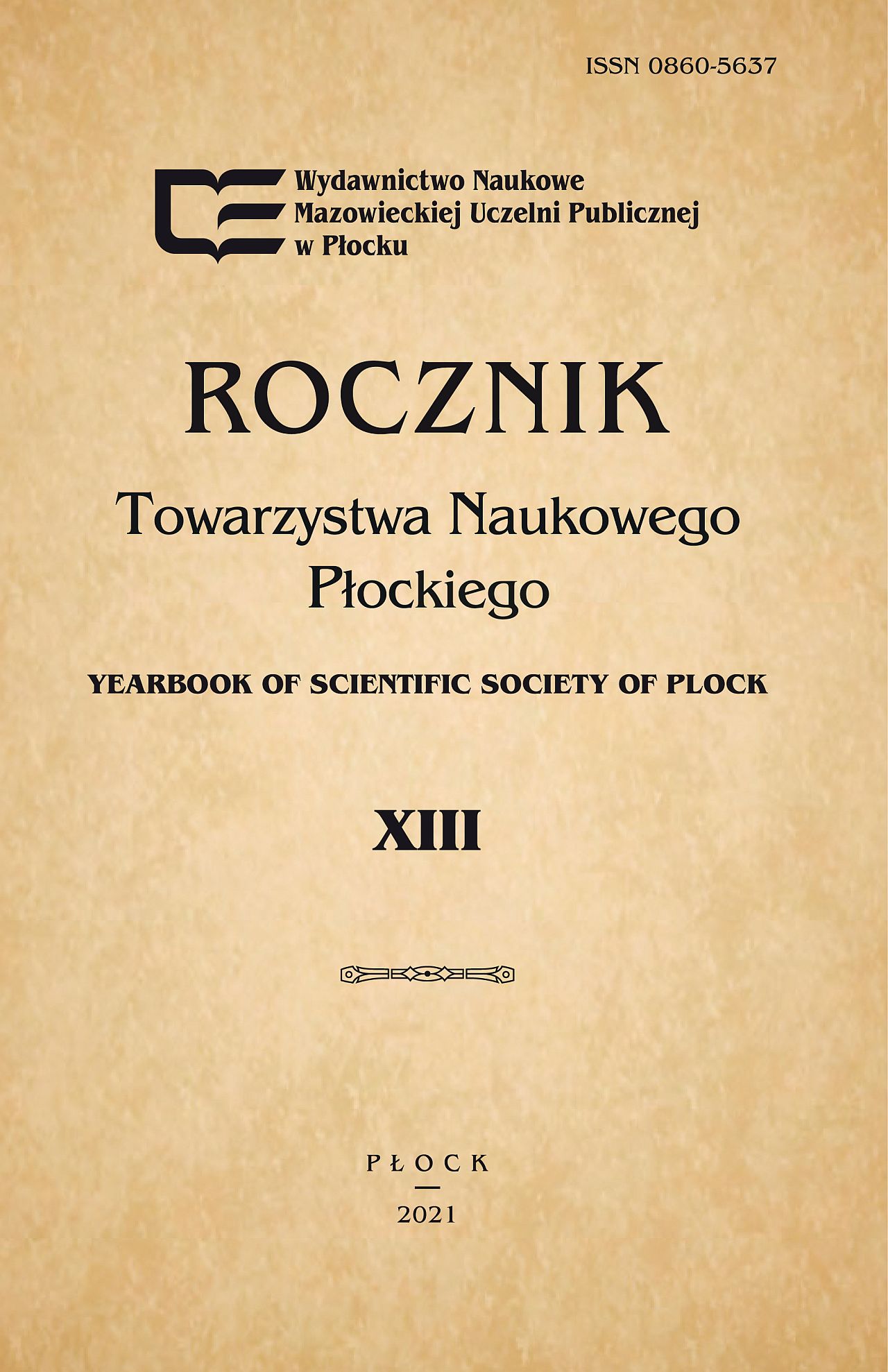Gestures of magic and rituals. Examples of emblematic gestures used in selected european countries
DOI:
https://doi.org/10.19251/rtnp/2021.13(13)Keywords:
emblems, emblematic ritual gestures, emblematic magic gestures, gestures of magic, symbolic ritual gestures in EuropeAbstract
The text presents selected emblematic (symbolic) gestures referring to various rituals, superstitions and magic, used in interpersonal contact in present-day Poland and some other European countries. On the basis on source literature and the author’s research, carried out in the years 2007-2017 in Poland, Greece and Great Britain, there have been described and analysed the meaning, function, etymology and the context of using of gestures such as spitting, touching wood, pressing thumbs, crossing the fingers, the cross, the horn sign, the fig, the ring gesture or the so-called moutza. It has been, among others, concluded that some gestural symbols have been functioning in a given culture in the same form and with unchanged meaning for centuries or millennia; some have a dichotomous nature; others have lost their original, ritual (sacral) or magical character although their original form has been preserved.
References
Antoniou-Kritikou, Ioanna (2008) Epokoinono sta Ellinika. Ennoiologiko leksiko cheironomion kai ekfraseon. Athina: Ellinika Grammata.
Axtell, Roger E. (1991) Gestures. The Do’s and Taboos of Body Language Around the World. New York, Chichester, Brisbane, Toronto, Singapore: John Wiley & Sons, Inc.
Brocki, Marcin (2001) Język ciała w ujęciu antropologicznym. Wrocław: Astrum.
de Jorio, Adrea (1832) La mimica degli antichi investigata nel gestire napoletano. Napoli: Fibreno.
Długosz-Kurczabowa, Krystyna, 2005, Słownik etymologiczny języka polskiego, Wydawnictwo Naukowe PWN, Warszawa.
Efron, David ([1941] 1972) [Gesture and Environment: A Tentative Study of the Spatio-temporal and Linguistic Aspects of the Gestural Behavior of Eastern Jews and Southern Italians in New York City, Living Under Similar as Well as Different Environmental Conditions. New York: King’s Crown Press, Morningside Heights] Gesture, Race and Culture. The Hague, Paris: Mouton.
Elworthy Frederick E. (1895) The Evil Eye. An Account of this Ancient & Widespread Superstition. London: John Murray.
Ekman, Paul, Wallace V. Friesen (1969) “The Repertoire of Nonverbal Behavior: Categories, Origins, Usage, and Coding.” [W:] Semiotica. Vol. 4(2); 49–89.
Eugenia, Georges (2004) Greeks. [W:] Carol R. Ember, Melvin Ember (red.) Encyclopedia of Medical Anthropology, Health and Illness in the World’s Cultures. Volume I: Topics, Volume II: Cultures. New York, Boston, Dordrecht, London, Moscow: Kluwer Academic/ Plenum Publishers, s. 681-689.
Forstner, Dorothea (1990) Świat symboliki chrześcijańskiej. Warszawa: Instytut Wydawniczy PAX.
Ifrah Georges (1990) Dzieje liczby czyli historia wielkiego wynalazku. Wrocław, Warszawa, Kraków, Gdańsk, Łódź: Zakład Narodowy im. Ossolińskich.
Jarząbek, Krystyna, Antoni Cygan (1994) Gestykulacja i mimika: słownik. Katowice: Wydawnictwo Śląsk.
Johnson, Harald G., Paul Ekman, Wallace V. Friesen (1975) “Communicative Body Movements: American Emblems.” [W:] Semiotica. Vol. 15(4); 335–353.
Jones, Steve ([1993] 1998) [The Language of the Genes. Biology, History and Evolutionary Future. Hammersmith, London : Harper Collins Publishers.] Język genów. Biologia, historia i przyszłość ewolucji. Tłum. Krzysztof Salawa. Warszawa: Książka i Wiedza.
Kowalski Piotr (1998) Leksykon. Znaki świata. Omen, przesąd, znaczenie. Warszawa, Wrocław: Wydawnictwo Naukowe PWN.
Licht Hans (1928) Sittengeschichte Griechenlands, Ergänzungsband. Die Erotik in der griechischen Kunst, Ergänzungen zu Band I und II. Zürich: Paul Aretz Verlag.
Masłowska Ewa (2016) Dobre słowo jako tekst magiczny. Życzenie — pozdrowienie — błogosławieństwo. w: Język a Kultura, 26, Wrocław: Wydawnictwo Uniwersytetu Wrocławskiego, s. 231 - 243.
Morris, Desmond, Peter Collett, Peter Marsh, Marie O’Shaughnessy (1981) Gestures; ther origin and distribution. London: Triad Granada.
Morris, Desmond ([1994] 1997) [The Human Animal: A Personal View of the Human Species. London: BBC Publications.] Zwierzę z wane c złowiekiem. Tłum. Zofia Uhrynowska-Hanasz. Warszawa: Świat Książki – PRIMA.
Opie Iona, Moira Tatem (1989) A dictionary of superstitions. Oxford: Oxford University Press.
Paluch Adam (1995) Etnologiczny atlas ciała ludzkiego i chorób. Wrocław: Wydawnictwo Uniwersytetu Wrocławskiego.
Pliniusz (1961) Historia naturalna (wybór). T łum. Z ofia Z awadzka, Tadeusz Zawadzki. Wrocław, Kraków: Zakład Narodowy im. Ossolińskich — Wydawnictwo.
Ružičková, Eva (2001) Picture Dictionary of Gestures. American, Slovak, Japanese and Chinese. Bratysława: Univerzita Kamenského Bratislava.
Stomma Ludwik (1986) Antropologia kultury wsi polskiej XIX w. Warszawa: Instytut Wydawniczy PAX.
Szczepaniak, Agnieszka, Tomasz Piekot (2009) Finding Kozakiewicz. In Search of a Method to Identify Polish Emblematic Gestures. w: Ewa Jarmołowicz- Nowikow, Konrad Juszczyk, Zofia Malisz, Michał Szczyszek (red.) GESPIN PROCEEDINGS. Vol. 1. Poznań.
Szczepaniak Agnieszka (2017) Gesty emblematyczne w międzykulturowej komunikacji niewerbalnej. Polsko-grecko-brytyjskie studium porównawcze i gestownik. Kalisz, Wrocław: Wydawnictwo Kaliskiego Towarzystwa Przyjaciół Nauk.
Teofrast [1963] Charaktery. w: Pisma wybrane. T. I. Pisma filozoficzne i wybrane pisma przyrodnicze. Tłum. Izydora Dąmbska. Warszawa: PWN; 340–370 i 500–517.
Teokryt [1901] Idylle i epigramaty. w: Utwory Teokryta (idylle i epigramaty). Tłum. Kazimierz Kaszewski (red.). Warszawa: Druk P. Laskauer i W. Babicki.
Wakarelski Christo (1965) Etnografia Bułgarii. Wrocław: Polskie Towarzystwo Ludoznawcze.
Źródła internetowe:
Malinowski Maciej (2015) Trzymać kciuki. https://obcyjezykpolski.pl/trzymac- kciuki / frazeologia, znaczenie zwrotów i wyrażeń (dostęp: 07.07.2021)
